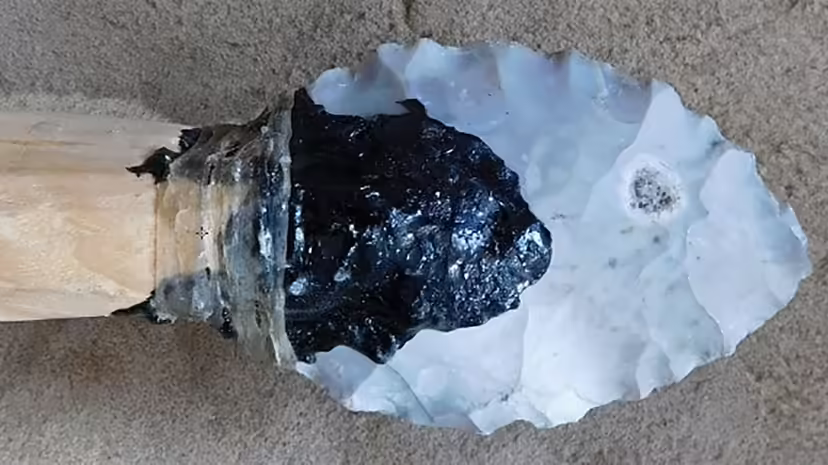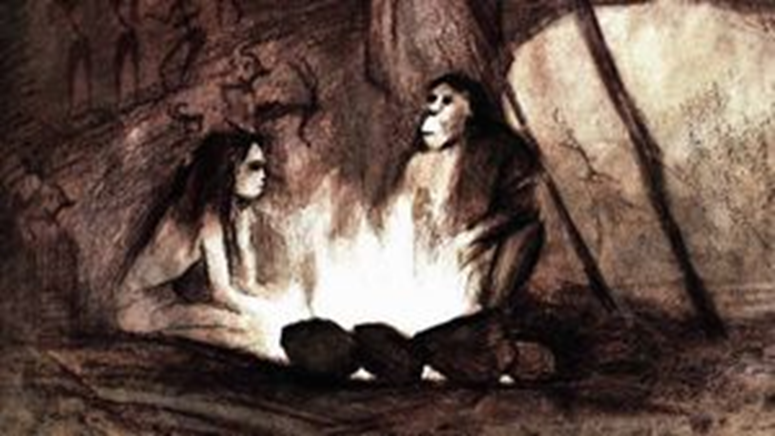Smarter than we thought, Neanderthals knew how to make a glue from birch tar

Illustrative image. Neanderthals (Homo neanderthalensi) making tools.
The results of a study, conducted on tools made by Neanderthals using birch tar 200,000 years ago, challenge the notion that modern humans were the first to develop complex manufacturing processes.
No, Neanderthals ( Homo neanderthalensi ) were not primitive beings. In any case, this is what has been shown by recent studies carried out by paleontologists on these hominids long depicted as inferior, when they possessed, it would seem, advanced cognitive abilities, similar to their contemporaries, modern humans ( Homo sapiens ).

This is evidenced by the latest research on the subject, published in the journal Archaeological and Anthropological Sciences on May 22, 2023: researchers from the Eberhard Karls University of Tübingen (Germany) have succeeded in demonstrating that Neanderthals used complex processes for the making their tools and weapons. More specifically, for making birch tar, used as an adhesive between stones and bones or the wood of handles.
Birch tar, the oldest synthesized substance
In the past, the ability to manipulate materials for use as tools was considered one of the main attributes of human intelligence. But since animals have been observed doing the same, the ability to synthesize substances and materials not found in nature has become one of the most important aspects of this cognitive advantage, as a unique sign of human intelligent behavior. . For good reason, "it requires careful thought, planning and understanding of our actions to convert raw materials through a learned process" , explain the authors of the new research in a press release .

Birch tar is thus, according to researchers, the oldest synthetic substance designed by the first humans. It is obtained by the pyrolysis of wood (also called distillation), that is to say its chemical decomposition thanks to a significant increase in its temperature. However, the oldest artifacts found with this glue - which has the advantage of being resistant to water and organic decomposition, a boon for archaeologists - are not associated with modern humans, but with Neanderthals from the Middle Paleolithic.
"State of the art" underground production technique
Only, scientists until then thought that Neanderthals obtained this famous tar opportunistically or with simple Stone Age methods , by scraping the substance from rocks after a fortuitous fire, for example. But the study carried out here shows that they did it in another way.
Its authors have therefore embarked on experimental archeology: they have recreated five different techniques for extracting birch tar, two on the surface and three underground. The resulting substance was then analyzed and compared (using infrared spectroscopy, gas chromatography, mass spectrometry and computed tomography techniques) to the chemical "traces" extracted from the old artifacts, which contained them a much older version.

The glue for these thousand-year-old objects, the researchers eventually discovered, was obtained by a much more efficient method than they imagined: an underground transformation technique more delicate to perform than those on the surface, "a step-by-step process of oxygen-limited distillation from underground heating to extract the synthetic adhesive ,” they write. To simplify, tar was distilled in an underground environment — a kind of "earth oven" — intentionally created to limit the circulation of oxygen and remain invisible during the process.
"First documented manifestation of this type in human evolution"
Given the complexity of this Neanderthal know-how, which predates by 100,000 years that known to modern humans, it is likely that this production of birch tar did not emerge spontaneously, but by dint of experiments, based on simpler previous methods. It does, however, provide an edifying insight into the remarkable abilities of Neanderthals.

There are only a few other transformation techniques that can be understood to document cultural evolution to a similar degree. The heat treatment of stone for cutting tools is one of them. While [this] predates in Africa [...], it has been shown that in South Africa it does not involve unseen subterranean processes. Thus, if dates of around 200,000 years are correct, Neanderthal birch tar making appears to be the first documented manifestation of its kind in human evolution.
For the researchers behind the study, this discovery therefore challenges our perception of "modern" human intelligence and its exceptional character. More and more archaeological evidence points in this direction, they point out, supporting one by one the fact that Neanderthals could use various complex methods of manufacture - whereas it has long been imagined that they were the prerogative of our ancestors, the only survivors of the genus Homo .
Other research recently published by the University of Cambridge (England) suggests that Homo neanderthalensi and Homo sapiens would also have shared fire-related cognitive abilities — "different forms of causal thought, cultural transmission and repetition, as well as cooperation in the collection and management of fire , " they elaborate — which could imply that "these abilities may have predated the evolutionary split between species over 500,000 years ago . " A study that, again, returns Neanderthals to a previously understated form of intelligence.
Source : websites

